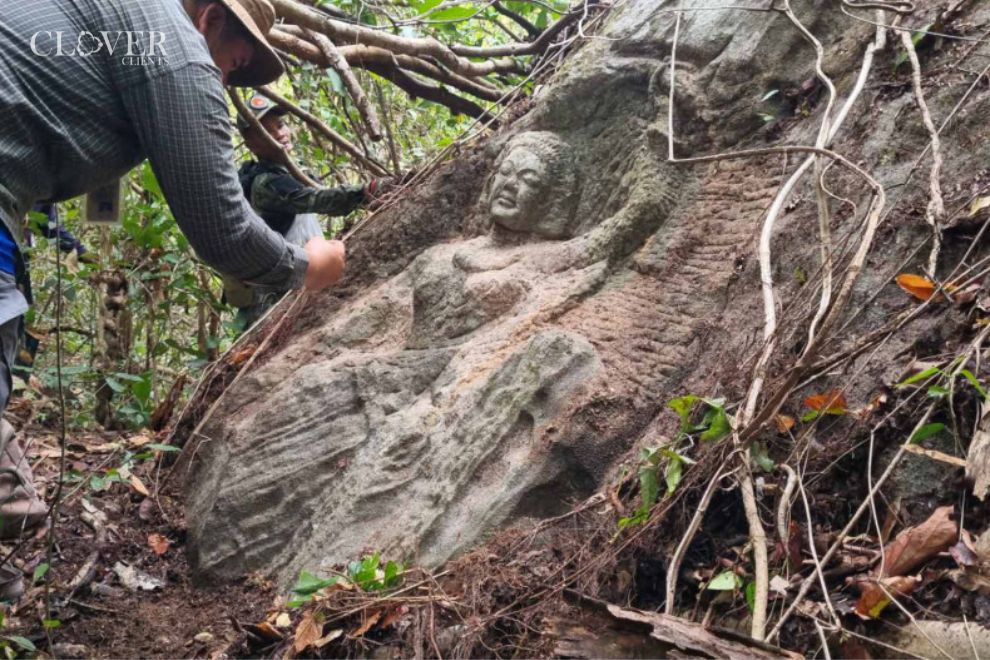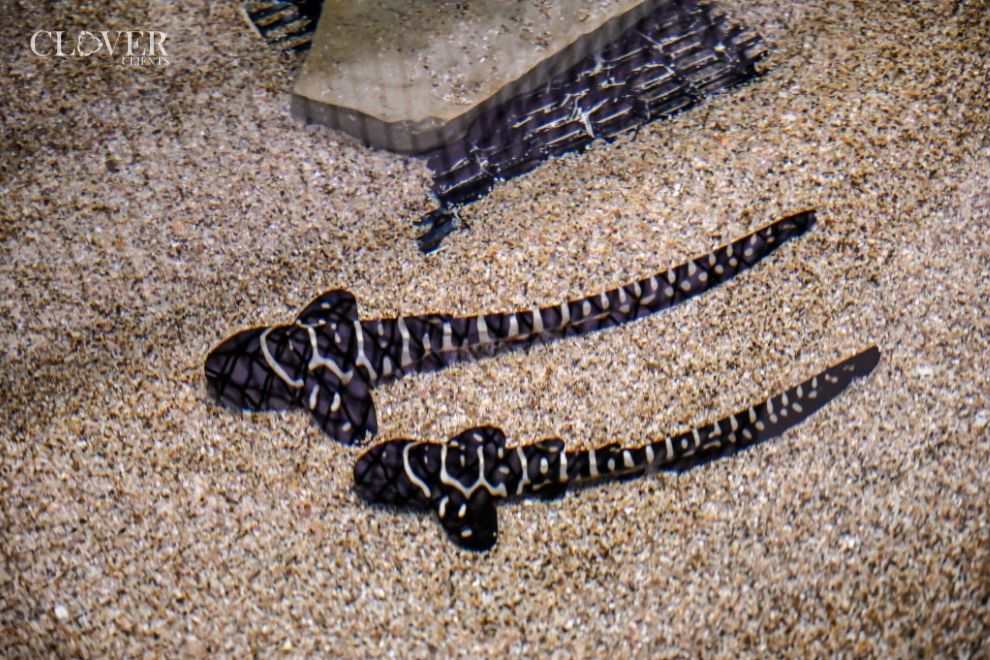Earlier this month, three Thai villagers embarked on a mushroom-hunting trip. Their journey took them deep into the Dong Yai Wildlife Sanctuary. They expected to find fungi but discovered something extraordinary instead. Hidden in the dense jungle, they stumbled upon a stone sculpture of a woman.
A Surprising Find in the Jungle
Pramul Kongkratok, one of the villagers, shared the discovery on social media. “Went mushroom hunting and found this,” he wrote. “I’ve lived here for so long, but just learned we have this around here. It’s a blessing.”
The sculpture immediately caught the attention of local officials. Initial announcements suggested that the piece might be ancient. However, its exact age is currently unknown. Thailand’s Fine Arts Department plans to investigate further. Theories about the sculpture’s origins have already begun to circulate.
The Sculpture’s Intriguing Details
The sculpture depicts a woman from the legs up. She emerges from the slanted face of a boulder on the forest floor. She has long hair and wears a traditional dress. This includes a full skirt and heavy neckwear. Her left arm appears to hold a branch above her head.
Some believe the sculpture dates back to the Dvaravati period. This Southeast Asian kingdom flourished between the 6th and 11th centuries. They think it depicts Maya Devi, mother of Siddhartha Gautama—the Buddha.
Art Historian Offers a Different Perspective
Not everyone agrees with this assessment. Chedha Tingsanchali, an art historian, suggests the sculpture may not be that old. He believes the sculptor imitated ancient Indian art. He notes that the facial features don’t match Dvaravati’s examples. He argues that Maya Devi holding a branch of a pipal tree is inconsistent. This depiction was not known in the region during the Dvaravati period.
The Significance of the Pipal Tree
The pipal tree is also known as the sacred fig, bodhi, or peepal tree. It is native to Southeast Asia and revered by Buddhists and Hindus. The newly discovered carving is located less than a mile from a historic Buddhist temple, Wat Pa Kha Kra Jiao. A group of monks known for their artistic skills occupied the area a few decades ago. This adds another layer to the sculpture’s mysterious origins.
The discovery has sparked numerous theories. Some suggest it might be a more recent creation inspired by ancient styles. The presence of skilled monks in the area lends credibility to this idea. Others believe it could be an undiscovered relic from a bygone era.
Thailand’s Fine Arts Department is set to investigate the sculpture. Experts will analyze the carving’s style, materials, and techniques. This will help determine its age and origins. Until then, the sculpture remains an enigmatic presence in the jungle.
Local Reactions to the Discovery
The villagers’ discovery has excited the local community. Many are curious about the sculpture’s history and significance. Some hope it will attract tourists and boost the local economy. Others see it as a sign of cultural heritage that needs preservation.
If the sculpture is indeed ancient, it could offer insights into the region’s history. The Dvaravati period was a significant era in Southeast Asian history. It saw the spread of Buddhism and the development of distinctive art and architecture. The sculpture could be a valuable link to this past.
Preserving the sculpture is crucial, regardless of its age. It is a part of the region’s cultural and historical landscape. Local authorities plan to protect the site from vandalism and natural decay. They hope to maintain its integrity for future generations.
Expert Analysis
Until experts complete their study, the origin and identity of the sculpted woman remain a mystery. The villagers’ discovery has sparked intrigue and anticipation. The sculpture stands as a testament to the rich and layered history of the region. Whether ancient or recent, it has already made a significant impact.
The villagers’ unexpected find highlights the value of exploration. Sometimes, ordinary activities can lead to extraordinary discoveries. Their story reminds us that the world still holds many secrets waiting to be uncovered. The lush jungles of Thailand have once again revealed a hidden treasure.
A Symbol of Wonder
The stone sculpture in Dong Yai Wildlife Sanctuary has become a symbol of wonder. It represents the curiosity and resilience of those who seek to uncover history. As experts delve deeper into its origins, the world watches with bated breath. The mystery of the stone woman continues to captivate all who hear her story.
However, the researchers and historians eagerly await the Fine Arts Department’s findings. The investigation will involve meticulous study and analysis. The process will take time, but it promises to unravel many aspects of the sculpture’s past. Until then, the stone woman stands as a silent witness to the mysteries of time.













